Book descriptions below provided by publishers:
On the Bookshelf
Call Number: DD253 .G844 2012
ISBN: 9780816670062
Publication Date: 2011-11-30
We have seen the films of professionals and propagandists celebrate Adolf Hitler, his SS henchmen, and the Nazi Party. But what of the documentary films and photographs of amateurs, soldiers, and others involved in the war effort who were simply going about their lives amid death and destruction? And what of the films and photographs that want us to believe there was no death and destruction? This book asks how such images have shaped our memories and our memorialization of World War II and the Holocaust. Frances Guerin considers the implications of amateur films and photographs taken by soldiers, bystanders, resistance workers, and others in Nazi Germany. Her book explores how photographs taken by soldiers and bystanders on the Eastern Front, depictions of everyday life in the Lódz ghetto, and home movies and family albums of Hitler's mistress Eva Braun, among others, can challenge the conventional idea that such images reflect Nazi ideology because they are taken by perpetrators and sympathizers. Through Amateur Eyes upsets our expectations and demonstrates how these images can be understood as chillingly unrehearsed images of war, trauma, and loss. Many of these images have been reused--often unacknowledged--in contemporary narratives memorializing World War II: museum exhibitions, made-for-television documentaries, documentary films, and the Internet. Guerin shows how modern uses of these images often reinforce well-rehearsed narratives of cultural memory. She offers a critical new perspective on how we can incorporate such still and moving images into processes of witnessing the traumas of the past in the present moment.
Call Number: GV1782.5 .L47 2006
ISBN: 0415362539
Publication Date: 2006-01-24
Traces the development of primitive, religious, folk, Eastern, social, stage, and modern dance, including ballet, and focuses on the important dancers, choreographers, and styles. The only scholarly book in English dedicated to recent European contemporary dance, Exhausting Dance: Performance and the Politics of Movement examines the work of key contemporary choreographers who have transformed the dance scene since the early 1990s in Europe and the US. Through their vivid and explicit dialogue with performance art, visual arts and critical theory from the past thirty years, this new generation of choreographers challenge our understanding of dance by exhausting the concept of movement. Their work demands to be read as performed extensions of the radical politics implied in performance art, in post-structuralist and critical theory, in post-colonial theory, and in critical race studies. In this far-ranging and exceptional study, Andre Lepecki brilliantly analyzes the work of the choreographers: Jerome Bel (France), Juan Dominguez (Spain), Trisha Brown, La Ribot (Spain), Xavier Le Roy (France-Germany), and Vera Mantero (Portugal) and visual and performance artists: Bruce Nauman (US), and William Pope. L (US). dance, arguing for the necessity of a renewed engagement between dance studies and experimental artistic and philosophical practices.
Call Number: GV1782.5 .M56 2007
ISBN: 9780736064767
Publication Date: 2007-05-29
Choreography: A Basic Approach Using Improvisation is the complete guide to understanding the entire process of choreography, from concept to stage production. Thousands of dancers and dance instructors have used the first two editions of this book to solve common challenges in choreography, improvise movement phrases, expand movements into dances, and organize dances into complete productions and concerts. This updated edition includes examples of how today's multimedia technology can be used to enhance choreography with special lighting effects, slide and PowerPoint projections, virtual dance performances, video conferencing, and motion capture. Each chapter contains movement exploration exercises, review and reflection questions, and application challenges that will help readers develop a better understanding of the choreographic concepts provided. And more than 70 high-quality photos provide a visual frame of reference and clarify key concepts. Choreography: A Basic Approach Using Improvisation bridges the theoretical and practical aspects of the choreographic process. It is an excellent reference for serious dancers, choreographers, dance instructors, and teachers who want to understand the creative process of transforming movement into dance.
American Ballet Theatre : Thirty-Six Years of Scenic and Costume Design, 1940-1976
Call Number: GV1786.A43 A45
Publication Date: c1976
Call Number: GV1786.B3 A77 1988
ISBN: 9780876637616
Publication Date: 1989-03-01
Diaghilev and the Golden Age of the Ballet Russes, 1909-1929 by
Call Number: GV1786.B3 D54 2010
ISBN: 9781851776139
Publication Date: 2010-10-01
A beautifully illustrated book examining the life, work and creativity of Serge Diaghilev.
Publication Date: 2012-04-26
Belle-époque Paris witnessed the emergence of a vibrant and diverse dance scene, one that crystallized around the Ballets Russes, the Russian dance company formed by impresario Sergey Diaghilev. The company has long served as a convenient turning point in the history of dance, celebrated for its revolutionary choreography and innovative productions. This book presents a fresh slant on this much-told history. Focusing on the relation between music and dance, Davinia Caddy approaches the Ballets Russes with a wide-angled lens that embraces not just the choreographic, but also the cultural, political, theatrical and aesthetic contexts in which the company made its name. In addition, Caddy examines and interprets contemporary French dance practices, throwing new light on some of the most important debates and discourses of the day.
Publication Date: 2011-04-15
The Ballets Russes has engaged people for 100 years, ever since Russian-born Sergei Diaghilev created this dynamic avant-garde company. Diaghilev brought together some of the most important visual artists of the 20th century - Pablo Picasso, Henri Matisse, André Derain, Robert and Sonia Delaunay, Georges Braque, Giorgio de Chirico, Natalia Gonchorova and Mikhail Larionov and more - who worked as costume and stage designers with composers such as Igor Stravinky, choreographers such as Michel Fokine, and dancers such as Vaslav Nijinsky, infusing new life and creative energy into the performing arts of the time. Premiering in Paris, the Ballets Russes, for the brief period of its existence (1909 - 29), created exotic, extravagant, and charming theatrical spectacle but also critical discussion and technical innovation, as well as exuding glamour - and often creating scandal - wherever it appeared. The costumes featured in this book are drawn entirely from the National Gallery of Australia's world-renowned collection of Ballets Russes costumes and ephemera. Through the costumes, drawings, programs and posters, the visual spectacle of the Ballets Russes is brought back into view for a contemporary audience to appreciate the revolution it was and the ongoing influence it continues to have today. This book is a must for anyone interested in the performing arts, the intersection of art and design, and costume and fashion.
Publication Date: 2000-01-01
Ballet and Fashion by Roger Leong
Call Number: GV1789.2 .L46 2012
ISBN: 9780724103638
Publication Date: 2013-05-19
Publication Date: 1998-01-21
The Serge Lifar Collection of Theater Designs, Costumes, and Paintings at the Wadsworth Atheneum Serge Lifar, the last great protege dancer of famed Russian ballet producer Serge Diaghilev, collected paintings, set designs, and costume designs from Diaghilev's Ballets Russes and from his own later productions at the Paris Opera. In 1933 Lifar's European dance company met financial disaster on tour in the United States, and Lifar was forced to sell his collection to pay for return fires for his troupe. The $10,000 he received from the Wadsworth Atheneum's flamboyant and imaginative director A. Everett "Chick" Austin was considered extravagant at the time. This collection, recognized as invaluable evidence of the emergence of modernism in theater and in Western art, is today unrivaled as a comprehensive documentation of the Ballets Russes. This catalogue presents the 188 works of art and thirty-two costumes that compose the Serge Lifar Collection. It has been enlarged since 1933, most notably with the 1996 acquisition of original costumes. Most of the set and costume designs and all of the costumes were made for thirty-seven Ballet Russes productions, from the first in 1909 to the last in 1929. The Ballet Russes was one of the greatest artistic movements of the early twentieth century, which fused the efforts of composer, choreographer, dancer, and designer into total works of art. Diaghilev commissioned prominent Russian painters and artists from the School of Paris -- among them Bakst, Picasso, Matisse, Braque, and Miro -- to design sets and costumes. This book provides notes about each production and the corresponding items in the collection, as well as a new assessment of theimmediate impact and lasting influence of the renowned Ballet Russes.
Publication Date: 1975-05-20
Authored by one of the ballet's most respected experts, this volume includes scene-by-scene retellings of the most popular classic and contemporary ballets, as performed by the world's leading dance companies. Certain to delight long-time fans as well as those just discovering the beauty and drama of ballet.
Publication Date: 2003-05-02
This fascinating study includes all the drawings, some familiar, some rarely seen, made by Picasso for the ballet.
Publication Date: 2007-08-01
One of the world's most influential photographers, Bruce Davidson, takes readers inside three midcentury big tops in images that are poetic, realistic and profound. He reveals not only the swiftly vanishing cultural phenomenon of the circus, but what might be called the eternal human circus. At a three-ring show in 1958 he climbed to the top of the tent to view the performances of the famous liontamer Clyde Beatty and human cannonball Hugo Zacchini. His deeper interest lay in the daily lives of circus performers and producers--the roustabouts and riggers, and the pretty girl who rode an elephant in what was called the "spec." He also made an intimate series of a dwarf clown. In 1965 at a huge multi-ring coliseum show, Davidson took a more critical look at performances under a steel-and-concrete environment; continuing behind the scenes, his vision became sharper and more surreal. And in 1967, Davidson caught the elegant exuberance of an Irish one-ring circus. He photographed the kinds of performances that are the essence of the medium, including a face-to-face encounter with an exceptional trapeze artist. Most of these pictures are published here for the first time.
Publication Date: 2004-11-01
Text and photographs provide a history of the performance troupe Cirque du Soleil from its first performance in Quebec in 1984 to the present featuring its 2400-member crew and 500-member international cast.
Publication Date: 2002-11-21
This book explores responses to Tang Xianzu's classic play The Peony Pavilion (Mudan ting) from three distinct segments of its public-literati playwrights; professional performers of Kun opera; and quite recently, directors and audiences outside China. Catherine Swatek first examines two adaptations of the play by Tang's contemporaries, which point to the unconventionality of the original work. She goes on to explore how the play has been changed in later adaptations, up to its most recent productions by Peter Sellars and Chen Shi-Zheng in the United States and Europe. Catherine Swatek is Associate Professor, University of British Columbia. She has published several articles on premodern Chinese drama and on female representation in Chinese opera.
Publication Date: 2006-12-04
Matthew Causey explores the research fields of performance and theatre, new media and digital culture studies as well as art and aesthetics. He considers the history of the technological advances in the media and computer environments and the manner with which theatre and performance have evolved within these systems.
Publication Date: 1999-01-21
In this fascinating collection of more than three-dozen conversations on contemporary art and ideas, Bonnie Marranca and Gautam Dasgupta bring together influential performers, video artists, playwrights, filmmakers, composers, and critics to talk about the artistic process, the perception of artworks by audiences, and the complex aesthetic, social, and political interrelationships that artworks reflect in the life of a culture. At the center of inquiry are issues that have preoccupied arts discussion in the last quarter of the century, addressed here by the very artists and thinkers responsible for extending the boundaries of their chosen fields in their search for new artistic and critical languages. Conversations takes up a broad range of key questions. What is the nature of presence? How does one see? Where does meaning reside? Topics include the creative process, the impact of criticism and historical legacies, arts funding and education, the modernism/postmodernism debates, and the special tensions between private and public spheres and between personal statement and the need for communication. This lively reader includes introductions, by the founders of PAJ, to each of the conversations, highlighting their original context and important themes. Organized into three sections -- "Art and Its Audience," "Writers and Composers," and "Bodies of Work" -- this volume includes more than fifty individual contributors in what amounts to a panoramic and polyvocal view of the American experimental arts scene. Contributors include John Cage, Gary Hill, Laurie Anderson, Edward Said, Susan Sontag, Umberto Eco, John Ashbery, Robert Jay Lifton, Philip Glass, Stanley Kauffmann, Edwin Denby, Mac Wellman, Maria Irene Fornes, Trisha Brown, Carolee Schneemann, Robert Wilson, Richard Foreman, Herbert Blau, John Guare, Judith Malina, Elizabeth LeCompte, Wallace Shawn. In touchstones that are surprisingly similar, what emerge from these conversations are the high standards and intellectual rigor these artists bring to their work, commitment to artistic ideals, and the demands placed on the artists as well as the public.
Publication Date: 1998-01-27
This analysis of creativity in performance ranges from jazz to dance and from theatre to scientific presentations.
The Provocation of the Senses in Contemporary Theatre by
Call Number: PN1584 .D5 2010
ISBN: 9780415872676
Di Benedetto considers theatrical practice through the lens of contemporary neuroscientific discoveries in this provoking study, which lays the foundation for considering the physiological basis of the power of theatre practice to affect human behavior. He presents a basic summary of the ways that the senses function in relation to cognitive science and physiology, offering an overview of dominant trends of discussion on the realm of the senses in performance. Also presented are examples of how those ideas are illustrated in recent theatrical presentations, and how the different senses form the structure of a theatrical event. Di Benedetto concludes by suggesting the possible implications these neuroscientific ideas have upon our understanding of theatrical composition, audience response, and the generation of meaning.
Publication Date: 1983-03-01
Publication Date: 2007-04-01
This collection of essays and interviews by the editor of PAJ: A Journal of Performance and Art covers a wide range of current topics, such as avant-garde legacies, performance and ethics, art as spiritual practice, and the theater of food. The volume features individual commentaries on the plays of Wallace Shawn, The Wooster Group oeuvre, Robert Wilson and Gertrude Stein, and international theater, with extended reflections on performance in downtown New York City.
Publication Date: 2007-05-15
Alison Oddey takes us on a spectator's journey engaging with art forms that cross boundaries of categorization. She questions the role of the spectator and director, including interviews with Deborah Warner; the nature of art works and performance with artists Heather Ackroyd, Dan Harvey and Graeme Miller. She provocatively demonstrates the spectator as centre of the artistic experience, a new kind of making theatre-art, revealing its spirit and nature; searching for space and contemplationin a hectic Twenty-First century landscape.
ISBN: 087196421X
Publication Date: 1980-05-01
Publication Date: 2004-05-05
Anya Peterson Royce turns the anthropological gaze on the performing arts, attempting to find broad commonalities in performance, art, and artists across space, time, and culture.
Publication Date: 2013-08-15
"The Audience Experience" identifies a momentous change in what it means to be part of an audience for a live arts performance. Together, new communication technologies and new kinds of audiences and audience research have transformed the expectations of performance, and "The Audience Experience" explores key trends in the contemporary presentation of performing arts for audiences, among them convergence marketing and cocreation, children and young people as audiences, and the screening of live performance. The book also presents case studies of audience engagement and methodology, reviewing both conventional and innovative ways of collecting and using audience feedback data. Directed to performing arts companies, sponsors, stakeholders, and scholars, this collection of essays moves beyond the conventional arts marketing paradigm to build new knowledge about how audiences encounter, value and experience quality in the performing arts.
Publication Date: 2009-09-01
Publication Date: 1984-01-01
Publication Date: 1997-10-29
Explores the audience's role in traditional and avant-garde theatre, and the impact of the spectator upon the performance itself. Surveying past approaches to audience behaviour and contemporary theories of aesthetic response, the author advances suggestive proposals for a poetics of theatrical representation. This edition includes: a new chapter on intercultural theatre; a revised introduction which address the impact of cultural materialism, psychoanalysis and theories of performativity upon audience theory; and a revised bibliography.
Publication Date: 2008-06-01
This study by Monica Prendergast offers a curriculum theory for audience in performance presented in a series of essays and poems on this key yet neglected educational topic. In a contemporary world that has been described as the "society of the spectacle" and the "performative society," it becomes a significant task for educators to find ways to assist students in becoming more active and critical spectators. This unique book is presented in seven chapters that survey how audience has been taken up (or ignored) across many disciplines, including aesthetic philosophy, performance theory, cultural studies, and arts education. Drawing on key findings discovered in this extensive literature review, the author goes on to present a number of chapters that theorize how spectatorship may become a central concern of curriculum through committed and teacher-facilitated attendance of live performance. These performance experiences-which may be community-based or professional-then serve as catalysts for creative postperformance interactions with artists and further classroom explorations. Throughout the text, the author makes use of an emergent arts-based methodology called poetic inquiry. The poems she creates offer readers other perspectives on the investigation and act as a reminder that cultural performance, like poetry, is an aesthetic event that calls us to attention, to wide-awakeness in the world. Teaching Spectatorship is a groundbreaking study that makes a critical contribution to the fields of performance studies, curriculum theory, and drama/theatre education.
Publication Date: 2013-12-17
This work examines Hollywood from every angle-offering an insider's view of the iconic films and people that comprise the epicenter of unrivaled cinematic glory-and includes first-hand interviews with the stars. From the pioneers of cinema to the New Hollywood of the 1960s, this volume tells the epic tale of the golden age of American film studios. Featuring previously unpublished or rare interviews with Hollywood greats from Mickey Rooney to Kirk Douglas and from Jane Fonda to Julie Andrews, and including an excerpt from the last interview ever granted by the late Richard Burton, this history offers an insider's perspective of the world's most beloved entertainment traditions. From silent films to the innovations of sound and then color, from the studio systems that shaped Hollywood (nababs, censure, and "starification"), to glamour in all its facets (from set design to the femme fatale), and featuring all of the emblematic genres, professions, and even the studio brands, this book celebrates the vast creative hive at the center of the world's cinematic hub. Rare archival photographs from the set and behind the scenes accompany reproductions of the great movie posters and headshots of screen stars to provide a visual chronology of the evolution of American cinema. From musicals to Westerns to live-action movies, all of the great films, producers, stars, and directors that propagate the fabulous myth of Hollywood make this the ultimate homage and a valuable reference.
Publication Date: 1997-05-01
The hats, hairstyles, evening gowns, men's fashions, period costumes and films that started fashion trends, plus all the Oscar winners for costume design up to 1996 are included in this book for movie buff and fashion aficionado alike.
Publication Date: 1997-06-25
Long overshadowed by other art forms Germany produced a wide range of photographers who covered journalism, fashion and advertising as well as propaganda and art for art's sake. This book examines their work and the use and abuse of it.
Artist Books from Special Collections
Music and Dance By Evelyn Eller
Call Number: N7433.4.E55 M87 1994
Musical Memories by Evelyn Eller
Call Number: N7433.4.E55 M872 2000
Words and Music by Evelyn Eller
Call Number: N7433.4.E55 W67 2003
Call Number: N7433.4.S87 V37 2005
Rick Potts wrote the text ; Lynn Sures designed the book and carved the woodblocks.
Sounds of Silence by Rae Trujillo
Call Number: N7433.4.T78 S68 2008
Rhythm Grid by Thomas Parker Williams
Call Number: N7433.4.W55 R49 2013
The Dream of the Dirty Woman : A Play in One Act Based on a Dream of Elka Schumann By Elka Schumann
Call Number: PS3552.R357 D7 1980
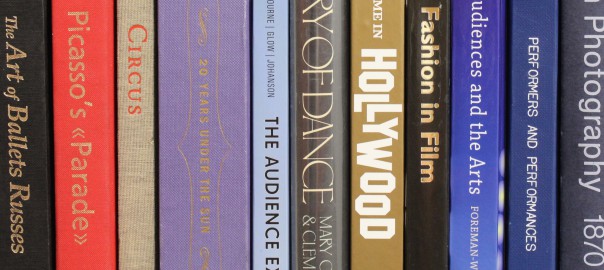



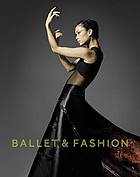



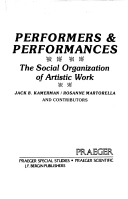
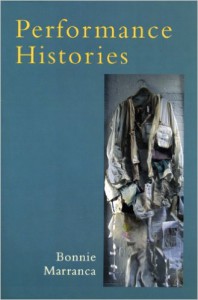
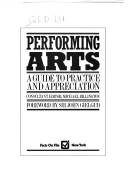
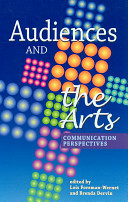

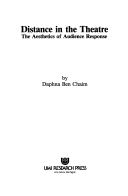
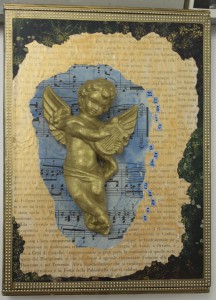
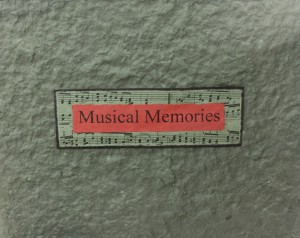
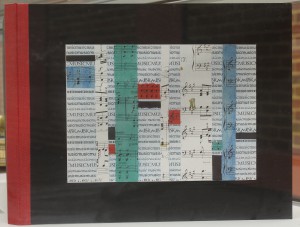
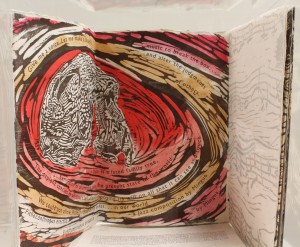
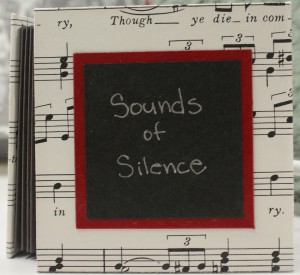
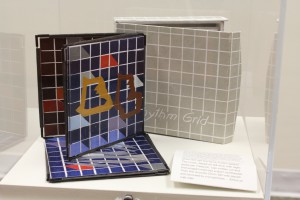
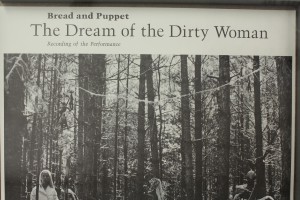

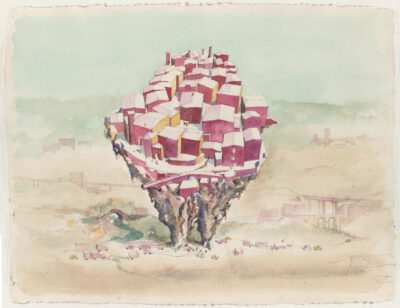
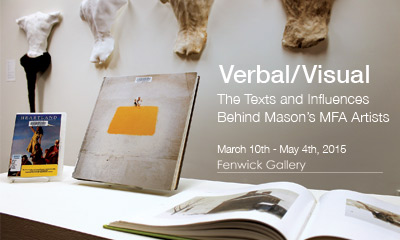
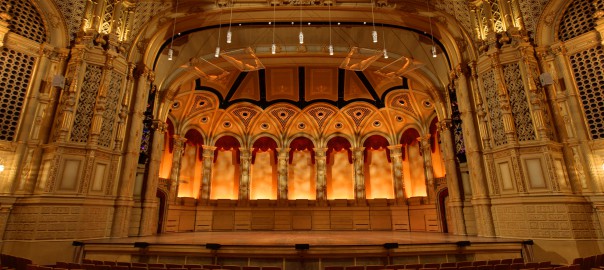


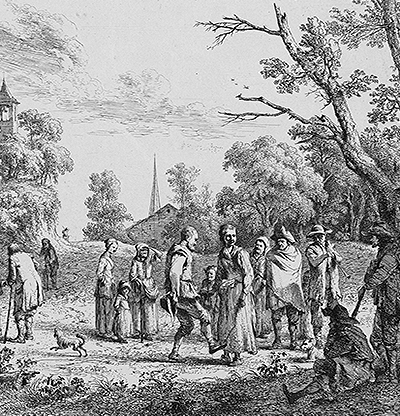

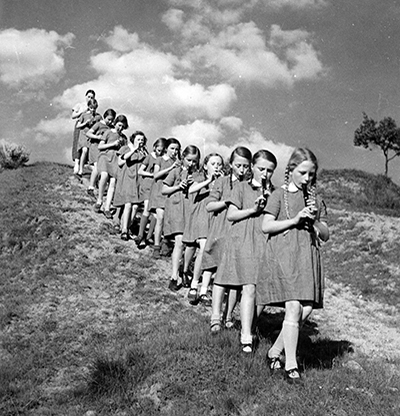
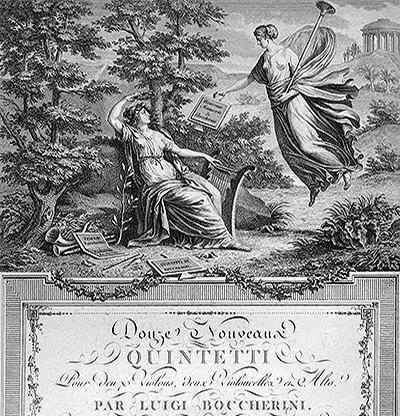
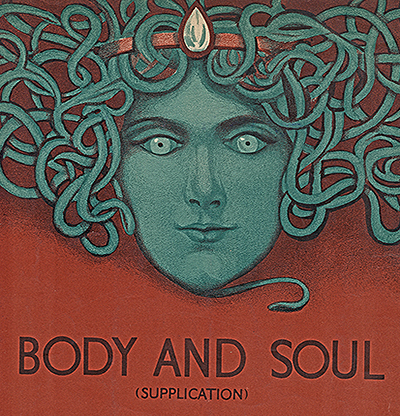
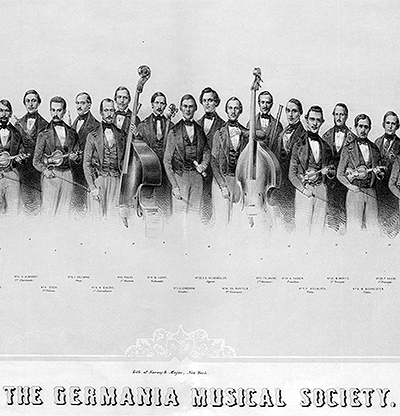
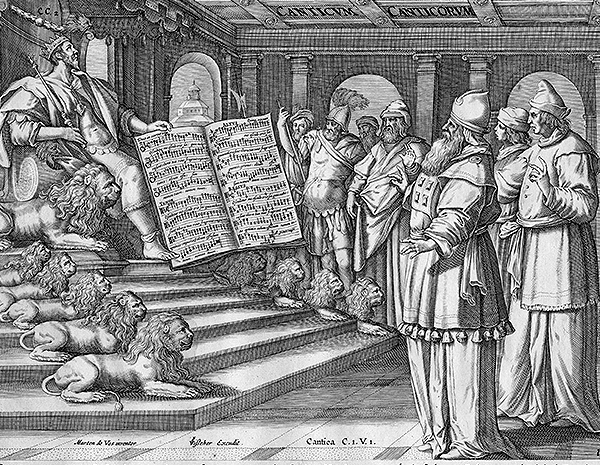
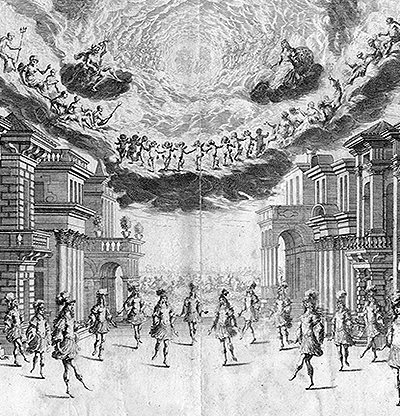

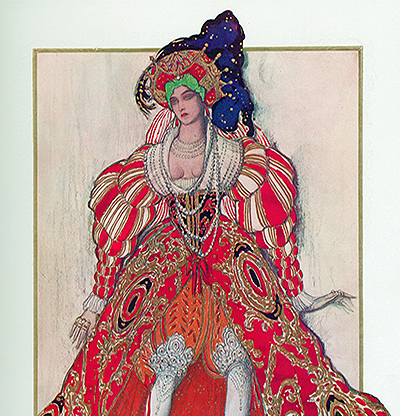
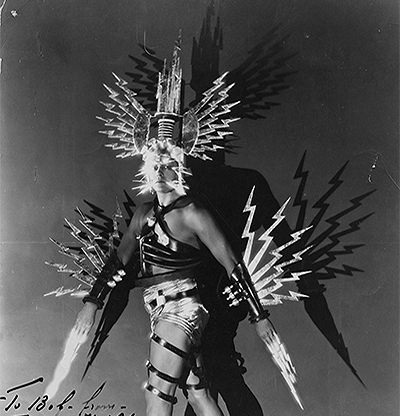

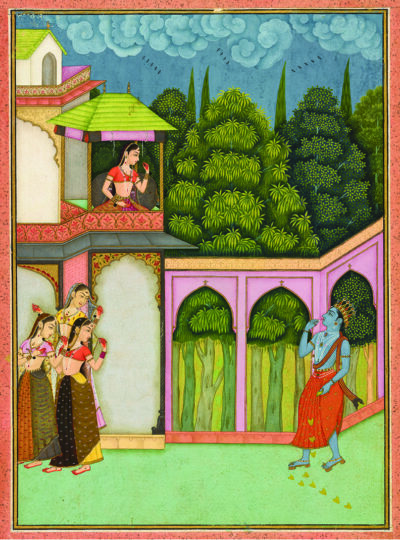
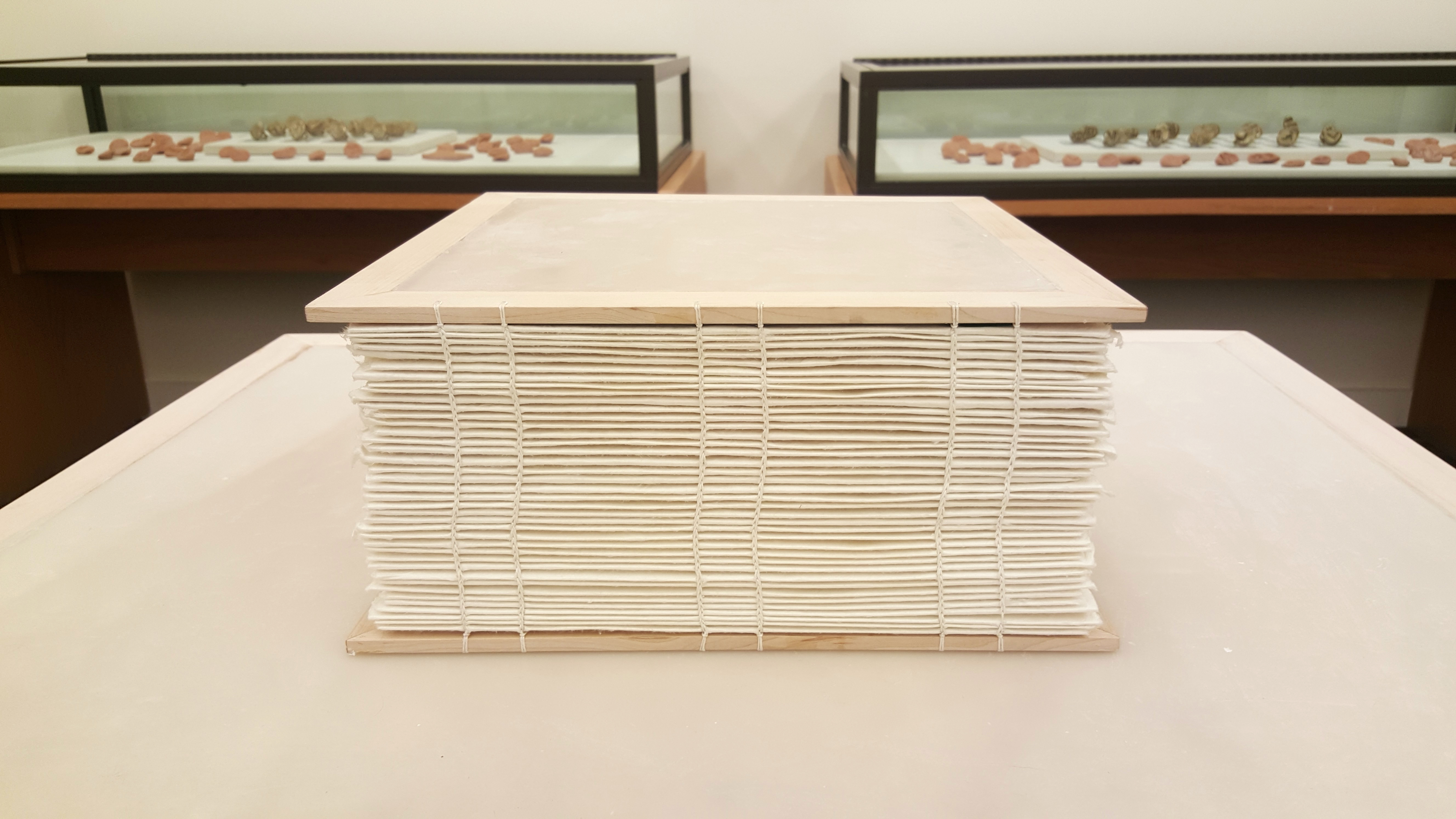
1 Comment
Add Yours[…] Picturing Performance: Music, Dance, and Theater Imagery from Mason Libraries’ Special Collect… […]